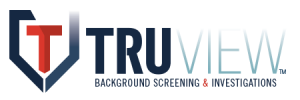Approaching the Future of Drug Testing: Advice for Employers in One State or All 50 States
By Bill Current, Founder, Current Consulting Group, LLC
This information is provided for educational purposes only. The reader retains full responsibility for the use of the information contained herein.
Responding to questions about the future of drug testing occupies much of my consulting time with clients these days. Providers and employers want to know what they can still do in terms of drug testing applicants and employees, especially considering the recent voting in which five more states voted to legalize pot. But as we head into 2021, it is more than pot that worries companies that sell and buy drug testing.
For many years, marijuana was often referred to as the “gateway” drug that led to the use of cocaine, heroin, and other so-called “hard” drugs. As of Election Day, November 3, 2020, marijuana can also be considered the gateway drug for the legalization of virtually all other drugs. Historically speaking, first came the decriminalization of marijuana in some states followed by the legalization of marijuana for medicinal use. That was followed by the legalization of recreational or so-called “adult-use” marijuana. Now this pattern is repeating itself for all other dangerous, highly addictive, and life-destroying drugs of abuse.
On November 3 not only did five more states vote to legalize marijuana, but Oregon, a bellwether state for the legalization movement, voted to decriminalize all Schedule I-IV drugs as designated by the Controlled Substances Act. And just as the legalization of marijuana has coincided with a trend of more employees testing positive for pot, the decriminalization of hard drugs will likely have a dramatically negative impact on the workplace as employers grapple with the ever-expanding boundaries of legal substance abuse.(i)
Why Drug Test?
Further, the legalization folks have now set their sights on crippling workplace drug testing. But for everyone who relies on drug testing to secure the safety of their workplaces and control the exorbitant costs associated with employee drug abuse, the following facts are important to keep in mind:
- Drug testing is still legal is all 50 states.
- Testing for marijuana is still legal in all 50 states.
- Testing for drugs other than marijuana is still legal in all 50 states.
- Pre-employment drug testing is still legal in all 50 states and has never been more important.
- And in all 50 states, employees at work under the influence of marijuana, cocaine, heroin, synthetic opioids and other drugs are more prone to cause a workplace accident, file a workers’ compensation claim, utilize their health care benefits, and work less productively than their non-drug abusing co-workers.
Drug testing works! Over the course of many years, it has proven to be a powerful deterrent to drug abuse and an effective way to identify people who need help. Yes, in some states that have legalized marijuana employers must comply with certain conditions when acting in good faith upon the result of a drug test, but no state has banned drug testing of employees or job applicants. In fact, even in New York City, which enacted a city ordinance that prohibits pre-employment testing for marijuana, applicants for a long list of safety-sensitive jobs can still be required to pass a pre-employment test that includes marijuana.(ii)
Approaching the Future of Drug Testing
But still, people want to know what the future of drug testing looks like. Here is the advice I am giving companies in all 50 states as we journey through 2021:
- Keep drug testing. To discontinue drug testing, especially in marijuana-friendly states, is an open invitation to trouble. Companies that employ workers who perform safety-sensitive functions that do not drug test could be exposing themselves to increased legal liability should those workers, while high on drugs, cause a serious or fatal accident.
- Test for marijuana, the number one substance of abuse after alcohol.(iii) If you don’t test for marijuana, you are inviting most drug abusers seeking jobs to work for your company.
- Test for a full panel of drugs. Just testing for marijuana is at least ill-advised if not a very bad idea. The rule of thumb when it comes to which drugs to test for to is test for the drugs that people are using. In addition to marijuana, at least test for cocaine, heroin, amphetamines and synthetic opioids.
- Consider alternative testing methods that do not require the use of off-site collection sites where sick people may gather. There are only three legitimate drug testing methods endorsed by the federal government—urine, hair and oral fluid. Urine and hair testing, two very reliable drug test methods, typically require the services of a specially trained collector. However, oral fluid collections can be donor-driven and conducted anywhere, anytime without the donor and collector coming in contact with each other, giving employers an alternative when additional flexibility is required.
- Consider alternative alcohol screening methods that do not require a deep-lung breath sample. Breath is one way in which viruses, such as the coronavirus, are transmitted. Saliva alcohol testing, which is permitted by the Department of Transportation (DOT), eliminates the collection of a breath sample. A combination of both methods, saliva to screen and an evidentiary breath test for those instances when a confirmation is needed represents a viable option for workplace programs.
- Consider telehealth collections. Sometimes referred to as virtual drug testing, telehealth collections eliminate the need to send people to off-site collection facilities. This type of collection can take place anywhere or anytime because the donor and collector are not in the same location. Via the use of a video app like Zoom or Proof installed on a smartphone or tablet, the donor serves as the collector by following very simply instructions provided through the app. The popularity of this collection method utilizing oral fluid is growing in the workplace market as well as in the insurance and drug treatment markets.
- Test for COVID. The COVID-19 pandemic continues to shape the so-called “new normal.” Even with a vaccine becoming more readily available, workplace COVID safe practices are likely here to stay. COVID screening practices such as temperature checks and COVID testing can help employers secure the well-being of their employees and customers.
- Confirm non-negative point-of-collection or instant/rapid test results at a laboratory. A lab-confirmed result is legally defensible especially when it comes from a lab certified by the Substance Abuse and Mental Health Services Administration (SAMHSA) or the College of American Pathologists (CAP), which certifies labs for urine, oral fluid and hair testing.
- Remember, a positive drug test result, regardless of the method or the specimen type, does not provide legal or scientific proof that someone is impaired. No reputable drug testing company will claim otherwise. Train supervisors to be able to recognize poor work performance, which may or may not be the result of drug abuse. Document aberrant behavior and, when necessary, take adverse employment action based on a combination of behaviors that violate company policy, including but not based solely on testing positive for drugs. Also, consider non-drug tests that are designed to identify impairment such as pupillary-type eye exams, variations of which have been successfully used in law enforcement for many years.
- Finally, always rely on a Medical Review Officer (MRO) to verify confirmed positive drug test results. With the growing popularity of alternative testing methods such as hair and oral fluid testing and the ever-spreading legalization of marijuana, the role of MROs in ensuring the integrity of a workplace drug testing program is more critical than ever.
Conclusion
I remember writing an article in the early 1990s about the viability of workplace drug testing. I made my arguments in favor of drug testing and concluded by boldly declaring that “drug testing is here to stay.” In reality, at the time it was not such a bold prediction to make. Back then companies of all sizes and from virtually every industry were implementing drug testing policies at a rapid pace, the science of drug testing was improving every year, and almost all the anti-drug testing state laws of the 1980s had been amended to be more employer friendly. The legal path ahead for workplace drug testing was clear of most obstacles. Sadly, such is no longer the case.
However, even though the drug legalization movement has declared war on drug testing and the first state ever has decriminalized all drugs, not just pot, drug testing, when done right, remains the most effective way to combat the negative impact of drug abuse in the workplace. For employers in one state or all 50 states, now is not the time to give up on the goal of maintaining safe, drug-free workplaces. And drug testing remains the key to achieving that goal.
© 2010-2021 The Current Consulting Group, LLC – No portion of this article may be reproduced, retransmitted, posted on a website, or used in any manner without the written consent of the Current Consulting Group, LLC. When permission is granted to reproduce this article in any way, full attribution to the author and copyright holder are required.
(i) “Workforce Drug Testing Positivity Climbed to Highest Rate in 16 Years, New Quest Diagnostics Drug Testing Index™ Analysis Finds.” Quest Diagnostics, 25 Aug. 2020, www.questdiagnostics.com/home/physicians/health-trends/drug-testing/.
(ii) See City of New York Admin Code §8-107 31.
(iii) Substance Abuse and Mental Health Services Administration. (2019). Key substance use and mental health indicators in the United States: Results from the 2018 National Survey on Drug Use and Health (HHS Publication No. PEP19-5068, NSDUH Series H-54). Rockville, MD: Center for Behavioral Health Statistics and Quality, Substance Abuse and Mental Health Services Administration. Retrieved from https://www.samhsa.gov/data/



